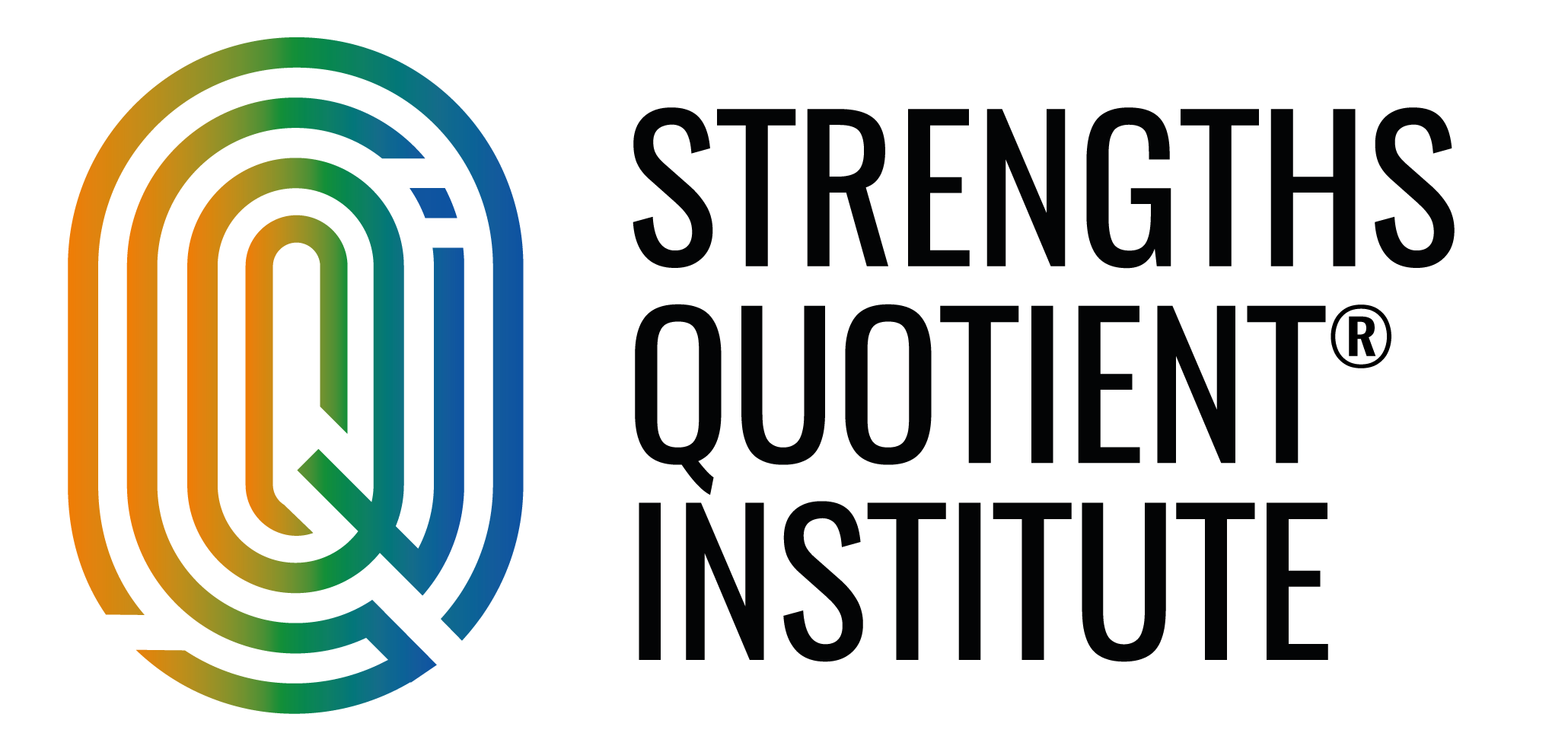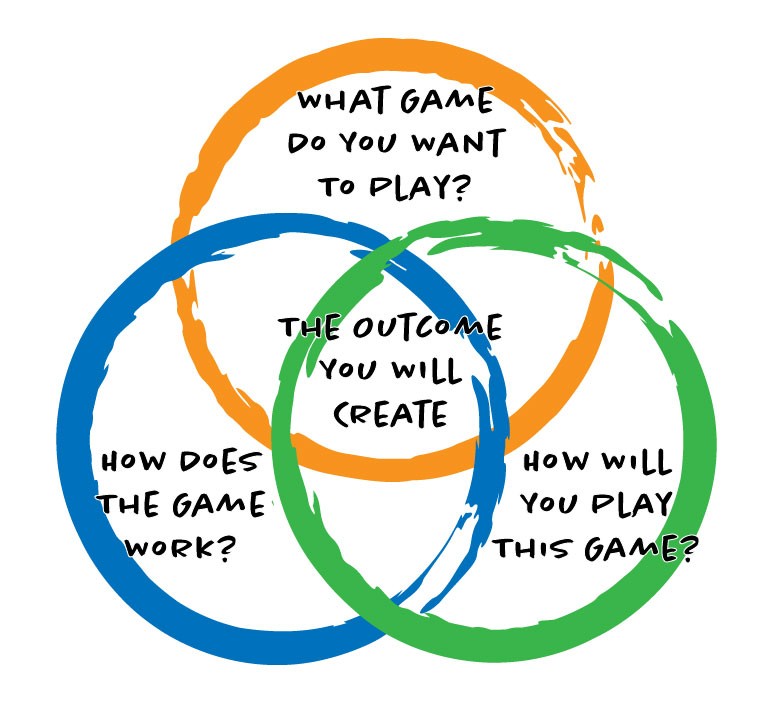
ENGAGE THE INDIVIDUAL . INSPIRE THE WORLD
I vividly remember a conversation I had many years ago in 1974, which marked a turning point in my leadership journey. I was sitting at a Holiday Inn with my friend, Kurt Campmeyer, when he asked me if I had a personal growth plan. I didn't. In fact, I didn't even know you were supposed to have one.
—John C. Maxwell
THE STRENGTHS QUOTIENT® GAMEFY FRAMEWORK
A journey of a thousand miles...
...starts with being prepared.

A large part of being prepared is both being clear on what the journey (or what we identify as the game) is about and then what is required. The Strengths Quotient® Institute provides foundational preparation to play the game, in the most deliberate or intentional way possible.
The Key is Sustainability
When embarking on most endeavours, starting is most frequently the easier part. What most people fail to do is complete. The difference between people who get to the end, the people who actually finish the race or complete the game, is sustainability.
Most significant endeavours require several key factors to create that sustainability. Magnificent and Epic Endeavours require a different set of tools. We identified three key anchor points that we put into what we call the Strengths Quotient® Gamefication (SQG) Framework to address and create that sustainability, to create maximum impact and learning, and to create the outcome that we desire.
1. What Game Do You Want To Play?
Where do you want to go?
There is something that we will create in our lifetime. We call this game our Epic Purpose. Within the Epic Purpose we may identify one or more Epic Projects that we will undertake. The clearer we are about what that is, the easier it is to map out the journey we will undertake, or how we will play this game to create that outcome.
This is the most critical part of the SQG Framework is then designing the desired outcome and result. Everything else hinges on how clear this is.
Understanding Your Current State or Starting Point
The next most important thing we need to know, to get to where we want to go, is where we are currently at, and the current state that we are in. What we have with us, what we bring with us, and sometimes consider what we need to leave behind.
Sometimes we cannot see where we are at from where we are at or our current state. Without that critical information, we operate at sub-optimal levels that create sub-optimal outcomes and results.
The SQG Framework reflects this in a way that you are able to recognise, acknowledge and be at choice on how you want to then create this game.
2. How Does The Game Work?
What are the mechanics of the game?
The second part of the SQG Framework is understanding how the game works. The game that we want to play is governed by a set of rules. There are challenges and problems that need to be resolved in the game. There are other players that we might play with, or against in the game. There is the environment where the game exists and needs to be played.
The Right Map
What we need is a map of the terrain that we are going to be playing on, and create a strategy and plan for the route to get to the outcome that we want to create. One that creates maximum probability of winning the game.
The route that will allow us to get there the fastest, or require the least amount of resources put in to create.
The SQG Framework allows you to develop such maps and provides strategies for these maps - a critical part of the maps is how they match the realities or the terrain that you are on, and gives you key understanding how the world works, which allows you to manoeuvre with greater accuracy.
There are four elements that need to be considered as part of the mechanics of the game:
- What is the real problem that needs to be solved?
- Who are the participants involved in the game?
- Where is the game played? What is the environment like?
- What are the rules or information that we need, to play the game?
The Essential Compass
The simplest and most quinessential tool that will keep us directed and on track at any point in time - the navigation tool that we call the faithful compass. The true north.
The tool that keeps us focussed, and certain that we are on the right path.
Key to understanding this is knowing the challenges and problems that are being addressed. The first is being able to distinguish the noise from the real challenges, and the second is recognising what the real challenges are. The answers that we get depend on the clarity of the questions that we ask, and who we are asking these questions.
The SQG Framework will help you get clear and distinguish the way to play, and what the distractions are that would throw you off track.
3. How Will You Play This Game?
The third part of the SQG Framework is identifying how we will play this game. What we need, how we are going to utilise what we have, and who else we are going to play with.
Sufficient Equipment and Supplies
The greater the level of the game that we want to play, the longer it is that we need to acknowledge the game to be - it's more likely going to be a marathon, and the key is sustainability. It's having sufficient equipment and resources to get through the journey, and more than that, the right equipment and supplies. It's being able to distinguish between the essentials and not sacrificing what is important.
Determining what is sufficient requires an intimate understanding of what the environment is going to be like - whether the pace is fast or slow, or if the environment is a continuously evolving or dynamic one, or remains relatively unchanged. The SQG Framework provides such insights.
Related Skills and Knowledge
Playing any game requires a set of skills and some knowledge about the game. What we need to know to play the game in response to the rules of the game and what we will need to do to get through the greatest challenges and obstacles in the game to get to the win.
The SQG Framework helps focus and identify what relevant allows for the necessary skills and knowledge to be developed and mastered for the game.
The Vehicle
What will get you from here to there? It's going to have to last long enough and get you through the most challenging of terrains that you need to navigate.
The awareness we have of ourselves, what we can do, what we have available to us and how we operate and navigate in different environments allows us gives us access to what works, and what we can optimise for the journey.
The SQG Framework creates this discovery and self-awareness, but more than that, acknowledge how we can play this game to the best of what we have.
Journeymen
The greatest journeys are never made alone. Worthy companions complete the journey. People who are also on their journeys, with their experiences and wisdom. People who can offer feedback and support in a way no one else can.
People who help accelerate the journey.
Knowing who and where support can come from - who are our allies who will and can support the journey, and who will get in the way - is the difference between actually getting to where we want to go, vs being distracted with internal struggles that the actual journey is not being made.
The SQG Framework is based on the language and structure of Strengths Quotient® - the language of human potential and human genius. This is where potential allies and support will come from.
The Strengths Quotient® Gamefication Framework and how it is applied forms the core foundation for the Strengths Quotient® Program.
Play on!
STAY CONNECTED

